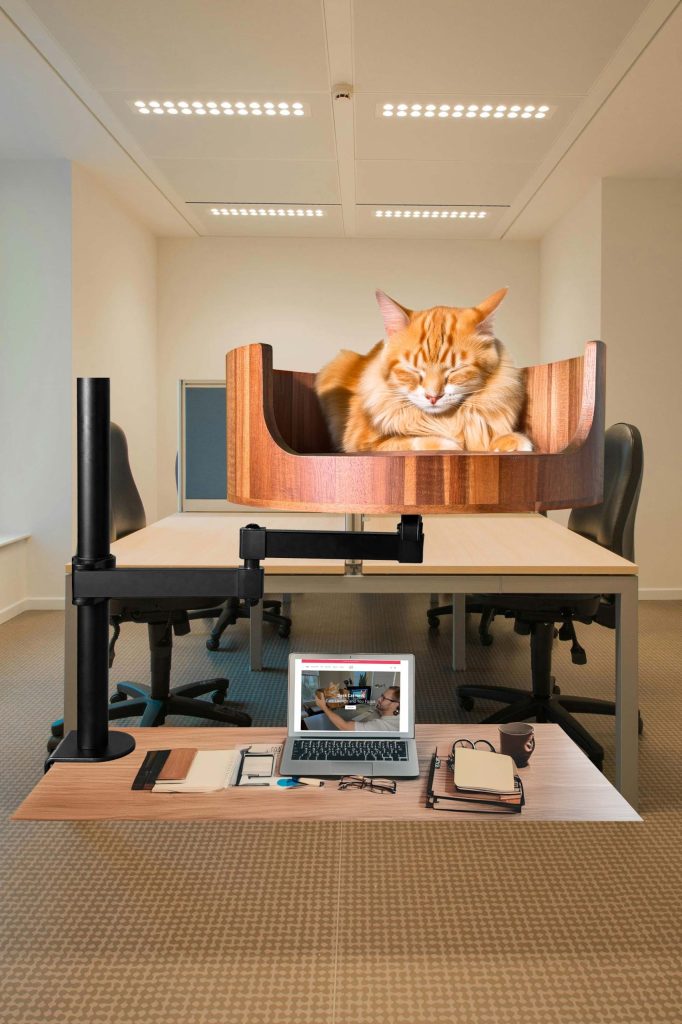Have you ever wondered how old your cat is in human years? Understanding feline age conversion can be a tricky task, but fear not! In this article, we will delve into the world of cat aging and provide you with the tools you need to know just how old your furry friend really is. Whether you’re a seasoned cat owner or a newcomer to the world of feline companionship, this information is essential for understanding your cat’s health and behavior.
At Desk Cat Nest, we are passionate about providing cat owners with the knowledge they need to give their furry friends the best care possible. In this article, we will explore the ways in which cats age differently from humans, the factors that can influence their aging process, and how to calculate your cat’s age in human years. By the end of this article, you will have a better understanding of your cat’s life stage and will be better equipped to provide them with the love and care they deserve. So sit back, relax, and get ready to unlock the secrets of feline age conversion!
1. Cats age differently than humans, with their first year being equivalent to around 15 human years.
2. The following years see a decrease in the rate of aging, with each additional cat year being roughly equivalent to 4-5 human years.
3. Understanding this feline age conversion can help cat owners better care for their pets as they grow older.
4. Factors such as breed, size, and overall health can impact how rapidly a cat ages in human years.
5. By viewing cat age in human terms, pet owners can tailor their care to suit the specific life stage of their feline companion.
The Basics of Feline Age Conversion
Understanding how to convert human years to cat years can be a bit confusing but knowing the basics can help clarify the process. The common rule used is that the first year of a cat’s life is roughly equivalent to around 15 human years. After that, each additional cat year can be calculated as roughly 4 human years. However, this rule is just a rough estimate and does not take into consideration factors such as breed, size, and overall health of the cat.
Factors Affecting Feline Age Conversion
Several factors can affect the accuracy of converting cat years to human years. For example, larger breeds of cats tend to have shorter lifespans compared to smaller breeds. Additionally, the overall health and lifestyle of the cat can also impact their aging process. Outdoor cats may have a shorter lifespan due to increased risks such as accidents or exposure to diseases. Understanding these factors can help provide a more accurate estimate of a cat’s age in human years.
Case Studies and Examples
To better understand feline age conversion, let’s consider a couple of case studies. For example, a 5-year-old cat would be roughly equivalent to a 25-year-old human using the 4:1 conversion rule. However, this calculation may vary based on the specific breed and health of the cat. Another example would be a 15-year-old cat, which would be roughly equivalent to a 76-year-old human. By looking at specific examples and case studies, we can see how the age conversion rule can be applied in different scenarios.
Importance of Understanding Feline Age Conversion
Having a basic understanding of feline age conversion can be beneficial for cat owners in various ways. It can help in determining the appropriate care and medical treatment for aging cats. Knowing a cat’s age in human years can also give owners a better idea of what to expect in terms of behavior and health issues as their cat gets older. By understanding feline age conversion, cat owners can provide the best possible care for their furry companions throughout their lives.
Desk Cat Nest FAQ
How does Desk Cat Nest help convert human years to cat years?
Desk Cat Nest provides a comfortable and cozy space for your beloved feline friend to relax and destress. By creating a personalized space for your cat, it can help reduce their stress levels and promote overall well-being, potentially lengthening their lifespan and converting human years to cat years.
Is Desk Cat Nest suitable for all cat breeds?
Desk Cat Nest is designed to accommodate cats of all breeds and sizes. The spacious design ensures that even larger cats can enjoy the comfort of the nest. The soft and plush material provides a warm and inviting environment for cats to enjoy.
How do I clean and maintain Desk Cat Nest?
Desk Cat Nest is easy to clean and maintain. The removable cushion cover can be machine washed for convenience. It is recommended to vacuum or brush the nest regularly to remove any hair or debris that may accumulate over time.
Can Desk Cat Nest help with my cat’s anxiety?
Desk Cat Nest can provide a safe and secure space for your cat to retreat to when feeling anxious or overwhelmed. The enclosed design of the nest offers a sense of privacy and security, which can help reduce anxiety levels in cats.
Is Desk Cat Nest durable and long-lasting?
Desk Cat Nest is made with high-quality materials that are built to last. The sturdy construction ensures that the nest will maintain its shape and integrity over time, providing your cat with a comfortable and reliable space for years to come.
In conclusion, investing in a Desk Cat Bed is a valuable choice for helping your cat feel comfortable and safe in their living space. Not only does it provide a cozy spot for your feline friend to rest and relax, but it also promotes mental and physical health by giving them a designated space to call their own. By incorporating a Desk Cat Bed into your home, you can ensure that your cat is living their best life and enjoying every moment of their human years to the fullest.


